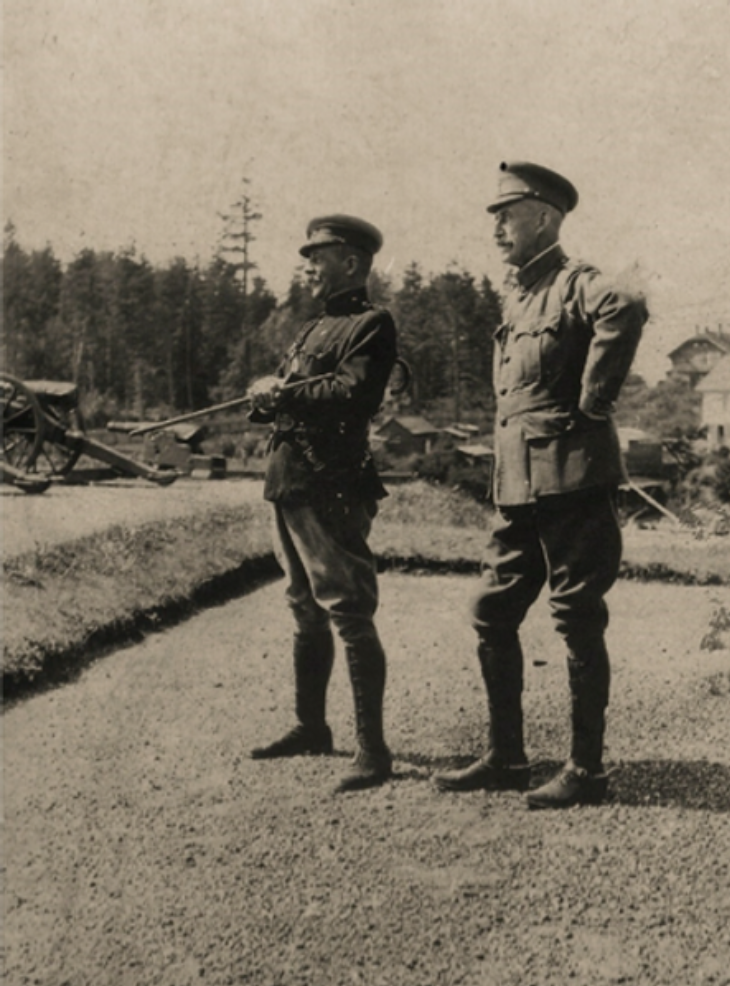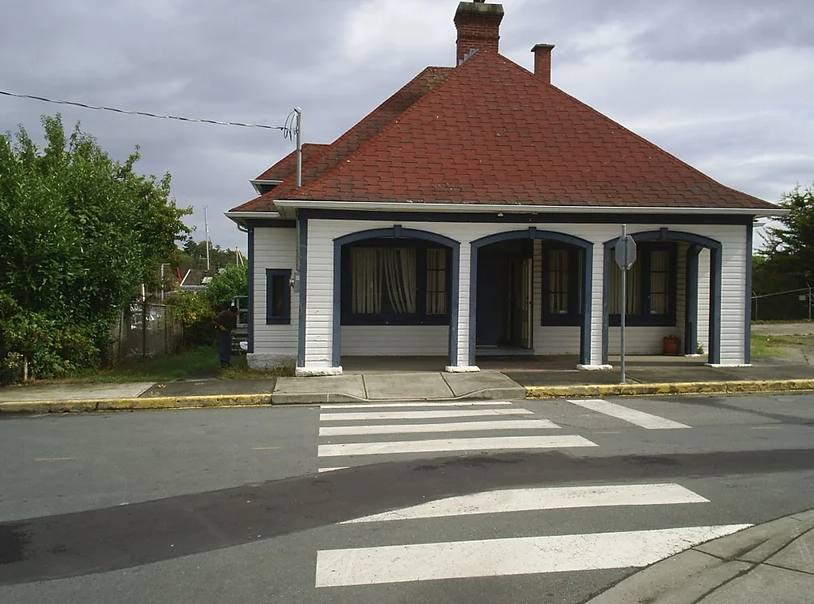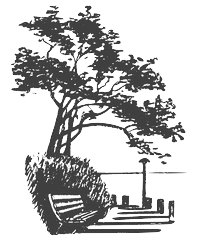West Bay History
West Bay is a thriving and attractive harbour-front neighbourhood. Its unique identity and sense of place are shaped by the area’s natural and human history.
Before the arrival of European settlers, the land that is now home to the neighbourhood of West Bay sat nestled between two indigenous nations: Songhees in Victoria Harbour and the Esquimalt Nations in Esquimalt Harbour. For 4,000 years, their shell harvesting and fishing camps were here, in West Bay and Rose Bay.
More recently, in 1851, West Bay was part of a Hudson’s Bay Company property, Viewfield Farm, that produced food for the settlements around Fort Victoria. Located on the Victoria Harbour side of Viewfield Farm, West Bay is where some large estates such as “Covelly”, Dunsmuir House “Mount Adelaide”, “Tyn-y-Coed” and Captain Jacobson’s House were established in the 1800s.

Col. James Peters and Lt. Col. Josiah G. Holmes at the Work Point Barracks Saluting Platform with Peters’ home “Ashburn” in
background to the far right. Photo ca. 1909, by Hugh Peters.
However, the most prominent development in the area was the establishment of the Work Point Barracks, and a resulting system of batteries protecting both harbours that were part of B.C.’s agreement for joining Confederation.
In 1887, a large southern portion of Viewfield Farm was negotiated by the Crown for the establishment of a gunnery school and a barracks that would become the headquarters of British Columbia’s Military District No. 11. This would have been created a few years prior, but the Northwest Rebellion in eastern Canada slowed “C” Battery’s arrival, led by Lt. Col. Josiah Holmes and Maj. James Peters.
The Work Point Barracks development was to be a major influence in the West Bay area, as well as in Victoria and other areas of Esquimalt. The Lt. Governor would often visit the officers in their mess hall.
Sporting events between the officers and the public, West Bay residents and Victoria alike, took place at the barracks, and the first golf course in B.C. originated at Work Point.
The Township of Esquimalt received some of its street names after the more prominent officers from Work Point, including Strange Street, Peters Street and McNaughton Avenue near the Gorge.
James Peters retired from the military in 1910, and later went on to be a councillor in the newly formed Esquimalt Council in 1912.
The Guard House of WPB (pictured at below) has recently become a Landmark Heritage Building within the Township.

